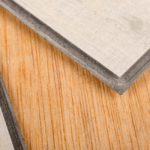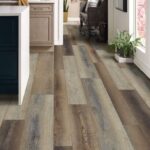What Carpet is Best For You?
Carpet has stood the test of time lasting through decades of trends and changes in the flooring. It comes in all colors, patterns, and textures, and new technology has made it more versatile than ever.
The wide array of carpet options can be a bit overwhelming, that’s why we’ve built this Carpet Guide to help ease the burden of navigating carpet buying. We’ll begin with discussing the favorable and less favorable sides of the carpet, to make sure it’s right for your situation, and move on to the different types of fibers, piles, and other important considerations.
In this guide, we’ll go over:
-
The Pros and Cons of Carpet
-
Types of Carpet Fibers
-
Carpet Dyeing Processes
-
Types of Carpet Piles
-
What Carpet Is The Easiest to Maintain
-
Best Places to Install Carpet
Let’s get started!
The Pros and Cons of Carpet Flooring
The Pros
-
Carpet is among the most inexpensive flooring options around! This is a major selling point for price-conscious homeowners.
-
The carpet’s wide array of colors, textures, and patterns offers flexibility in the look it can provide.
-
Unlike most hard surface flooring, carpet provides a soft and quiet surface to walk on that is warm to the touch.
-
Professionally installing carpet is relatively fast in most situations.
The Cons
-
Carpet shows wear and tear at a faster rate than most hard surface flooring. Especially if it’s in a high-traffic area.
-
Regular vacuuming is needed to maintain a clean look and a professional cleaning is recommended as needed.
-
The carpet is not as versatile as many hard surfaces due to its inability to repel water and wear.
-
It is not as durable as other flooring types and typically needs to be replaced more often.
Types of Carpet Fiber
There are a variety of different types of fiber that carpets can be made out of. Instead of providing a long list of types that would make your head spin, we narrowed it down to the three compositions you are most likely to see. All three of these fiber types can look exactly the same, but they have distinct differences.
1. Nylon
Nylon is our favorite type of carpet fiber and we’re not the only ones! It is known to be the most popular. Here’s what you need to know:
-
Has a higher level of resiliency and durability
-
Very soft to the touch
-
Fibers will hold their structure for a long time, even in high-traffic areas
-
Can last up to 15 years depending on the quality
-
The major downside is its lack of stain resistance, however, some nylon has stain-resistant treatment
-
On the higher end of the carpet price spectrum, but is still typically cheaper than hard surface flooring
2. Polyester
Polyester is another very popular type of carpet fiber and has its uses in many applications. Here are its core qualities:
-
One of the most cost-effective options
-
Very stain resistant
-
Holds color well
-
Not as soft as nylon
-
Does not wear as well as nylon
-
Has limited ability to maintain structure underweight and can mat down
-
Is recommended in low to moderate traffic applications
3. Polypropylene (Olefin)
Polypropylene is another very cost-effective option for carpets with a casual aesthetic. Here are the major traits you should know:
-
A strong fiber typically used to make berber, commercial carpets, and outdoor carpets
-
Also has a limited ability to maintain the structure
-
Has a lower melting point which can result in permanent scuffs from hard-soled shoes and dragging heavy furniture over the carpet
-
Not recommended for high-traffic hard-working areas
-
Can be applied in moderate to low traffic areas
-
Typically used in loop pile construction, which we will discuss later on
Different Carpet Dyeing Processes
There are many different methods carpet manufacturers use to dye their carpet fibers, and each method determines how fast a carpet will fade. The most important factor to understand though is whether or not the material is dyed before or after it is constructed into the carpet.
Pre-Dyeing of Carpet
Methods of pre-dyeing include solution dyeing, space dyeing, stock dyeing, and skein dyeing. We won’t bore you with the details, but the important thing to understand is that the material is dyed before being tufted (constructed into the carpet) which makes it less prone to fading.
Post-Dyeing of Carpet
Beck dyeing, piece dyeing, print dyeing, and continuous dyeing are all methods of dying in which the material has pigment applied after being constructed into a carpet. These methods are more prone to fade in comparison to the pre-dyeing methods.
Different Types of Carpet Piles
You might be wondering, what are piles? Piles refer to how manufacturers use fibers to make the carpet. These fibers are tufted (sown through the backing) and looped or cut to a certain length.
Carpet piles come in a wide variety of styles that have different positive and negative aspects. Let’s dive into them.
Cut Pile
Cut pile is a very popular carpet type, which has carpet strands that are tufted and cut leaving the ends exposed. Cut pile comes in different lengths and thicknesses. They are soft and cushiony underfoot in comparison to other styles.
Cut pile comes in many variations:
-
Saxony has longer twisted fibers, which provides more body
-
Plush has an even, smooth texture and a formal appearance
-
Textured has fibers of various lengths producing a varying surface
-
Frieze has very long fibers with a high twist. Great for hiding dirt and traffic patterns
Loop Pile
Loop pile is one of the more durable and stain-resistant types of carpet because of its dense, low pile. While the cut pile has exposed ends, the loop pile has the fibers, you guessed it, looped back in. The one drawback to the loop pile is its limited cushioning.
The various types of loop piles include:
-
Berber, which consists of short dense loops that stand up well in high-traffic areas
-
A multi-level loop means the pattern consists of different heights adding more of a textured look
Cut-Loop Pile
The cut-loop pile is of course a mixture of both pile types, providing a vast array of unique designs, textures, and patterns.
The combination of both cut pile and loop pile adds a new dimension of interesting looks. This pile type is great in contemporary decor.
What Carpet is The Easiest to Maintain?
As mentioned earlier, nylon carpet is our favorite in large part due to it’s easy maintenance. The strong fiber stands up very well to foot traffic and responds well to steam cleaning. Just be very careful with anything that could stain it. Although it may be a bit more expensive, the additional mileage you receive is well worth it.
If you’re looking for a carpet that hides dirt well, textured carpets and variegated colors are great, and more earthy colors are a plus as well.
The Best Places to Install Carpet Flooring
Hard surfaces seem to be taking over the floors in every home due to the higher level of durability and easy cleaning, but there are still rooms where the carpet is here to stay!
The Bedroom
Waking up and resting your feet on a soft warm surface can’t be beaten! We expect the carpet to stay in the bedroom for some time to come.
Stairs
Although it isn’t technically a room, carpet is a great option for stairs due to its additional grip and sound dampening qualities. Plus it’s your least expensive floor covering for a stairway
The Living Room
Although hard surfaces are becoming more popular in living rooms, the warm atmosphere carpet can provide is inviting. Just make sure to choose a durable option!
Let Us Help Find The Carpet That Meets the Needs of Your Space!
As you can see, there is a lot to consider when choosing a carpet. Let us make the decision process easy by offering options that will fit the needs of each room you would like to install!

